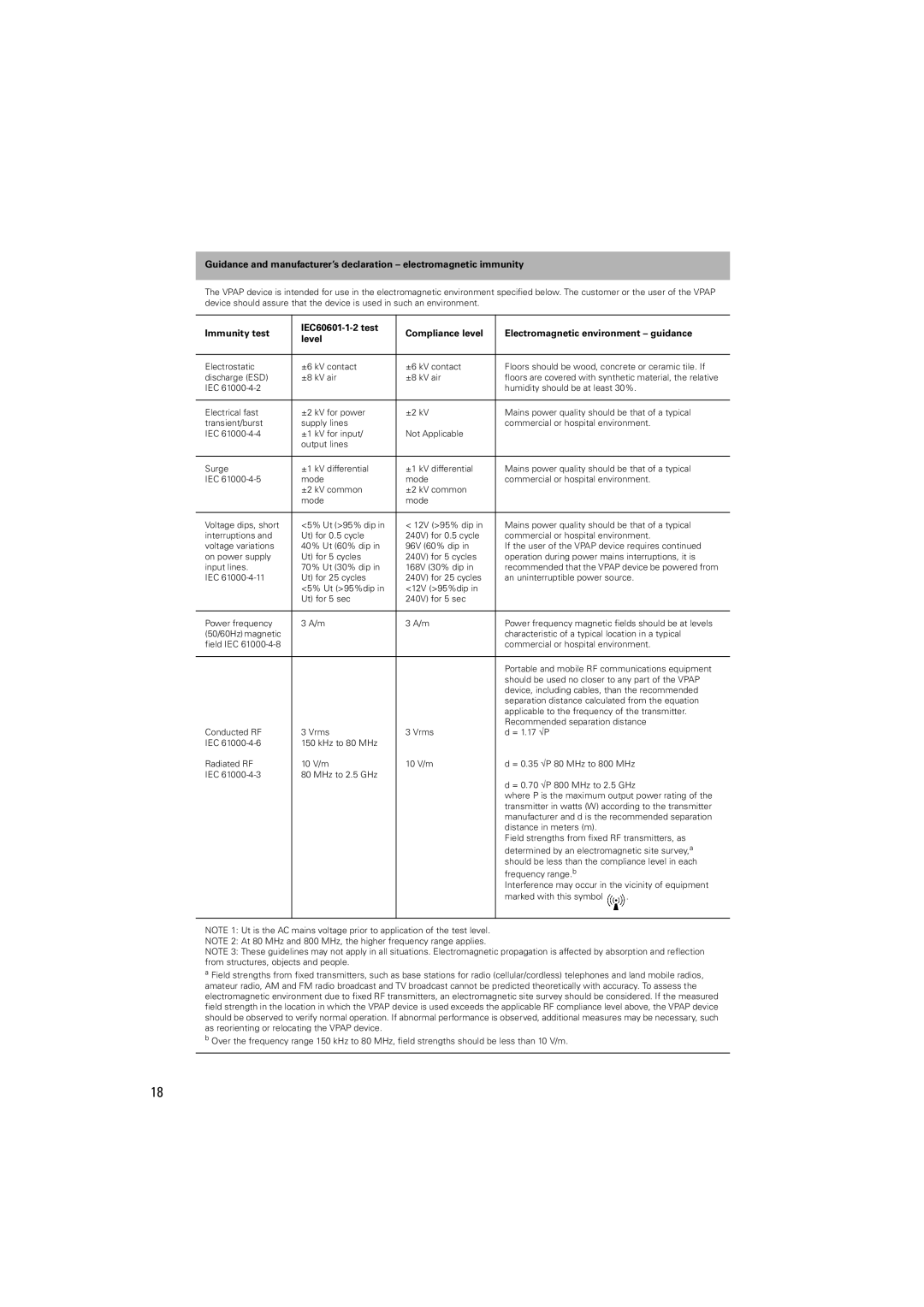AUTO 25, ST, S specifications
The ResMed S, ST, and AUTO 25 devices represent a significant advancement in sleep therapy technology, designed to enhance the treatment of patients with obstructive sleep apnea (OSA) and other sleep-related disorders. These devices are part of ResMed's commitment to improving patient outcomes through innovative breathing solutions.One of the standout features of the ResMed S, ST, and AUTO 25 is their adaptive pressure support capabilities. The devices utilize advanced algorithms to automatically adjust air pressure based on the user’s breathing patterns. This real-time responsiveness ensures that patients receive optimal therapy tailored to their specific needs, allowing for a more comfortable and effective treatment experience.
The automatic titration feature of the AUTO 25 is particularly noteworthy. It continuously monitors the patient’s airflow and adjusts pressure levels throughout the night. This dynamic capability not only enhances compliance but also helps to prevent apnea events more effectively than fixed-pressure devices.
In terms of comfort, the ResMed S, ST, and AUTO 25 feature a ramp function that gradually increases pressure from a lower starting point. This allows patients to fall asleep more comfortably before reaching the prescribed therapeutic pressure. The quiet operation of these devices adds to patient comfort, ensuring a peaceful night’s sleep for both the user and their partner.
Connectivity is another key characteristic of the ResMed S, ST, and AUTO 25 devices. Equipped with wireless technology, these devices allow for seamless data transfer to healthcare providers. This connectivity facilitates remote monitoring, enabling clinicians to track therapy progress and make necessary adjustments without the need for in-person visits.
Additionally, the user-friendly interface simplifies setup and navigation. Intuitive controls and a clear display make it easy for users to monitor their therapy progress and understand their treatment journey. The devices are designed with patient education in mind, providing users with essential information about their sleep patterns and therapy effectiveness.
ResMed also places a strong emphasis on the durability and reliability of its devices. The S, ST, and AUTO 25 are constructed with high-quality materials and are rigorously tested to ensure long-lasting performance. Maintenance is straightforward, with easily accessible components to facilitate cleaning and upkeep.
In summary, the ResMed S, ST, and AUTO 25 devices represent a comprehensive solution for sleep therapy, combining innovative technologies, user-friendly features, and reliable performance to improve patient care. Their intelligent adaptability, advanced monitoring, and enhanced comfort make them a preferred choice for individuals seeking effective treatment for sleep disorders. With ResMed’s ongoing commitment to research and development, patients can expect even greater advancements in sleep therapy solutions in the future.

